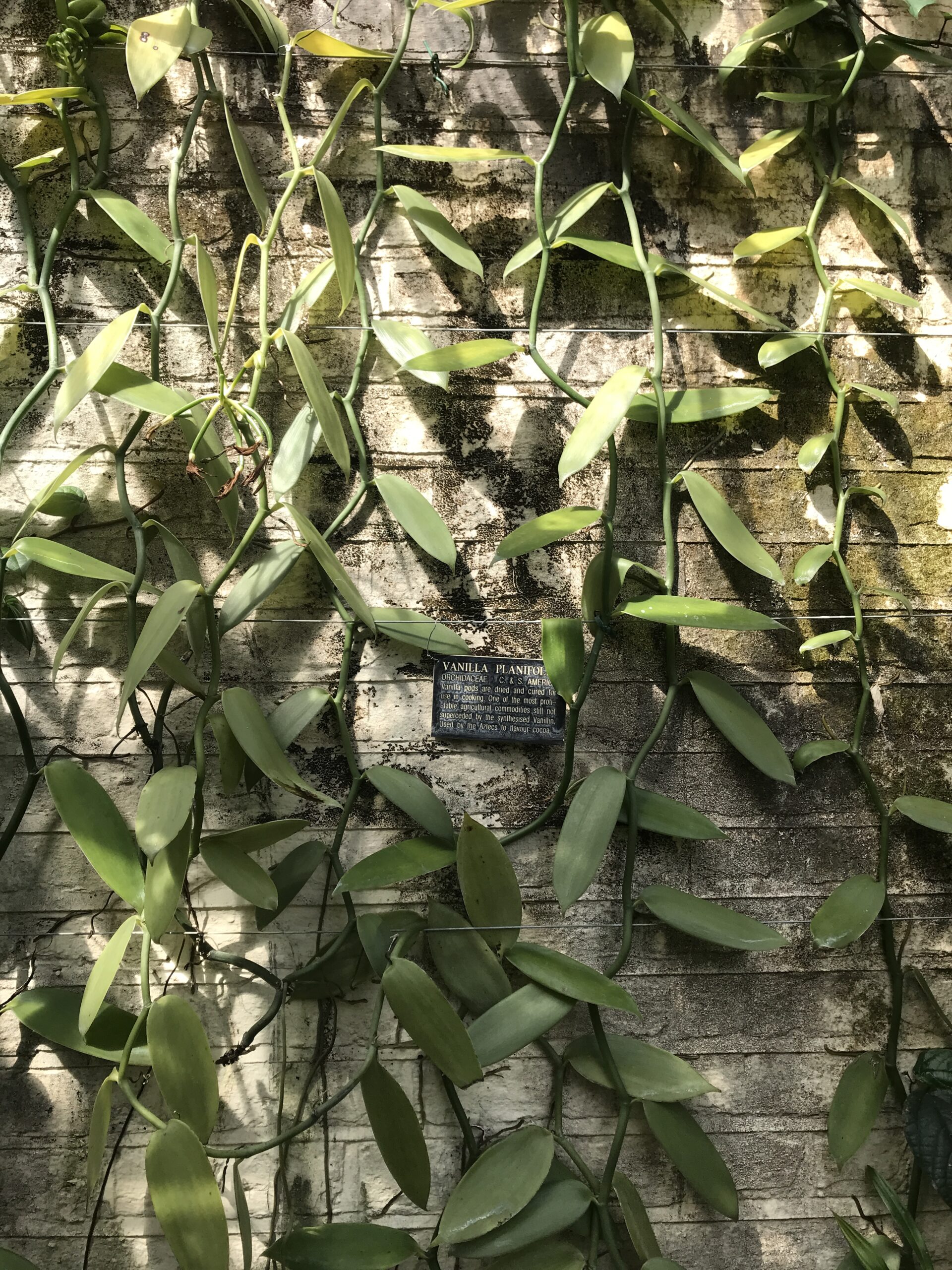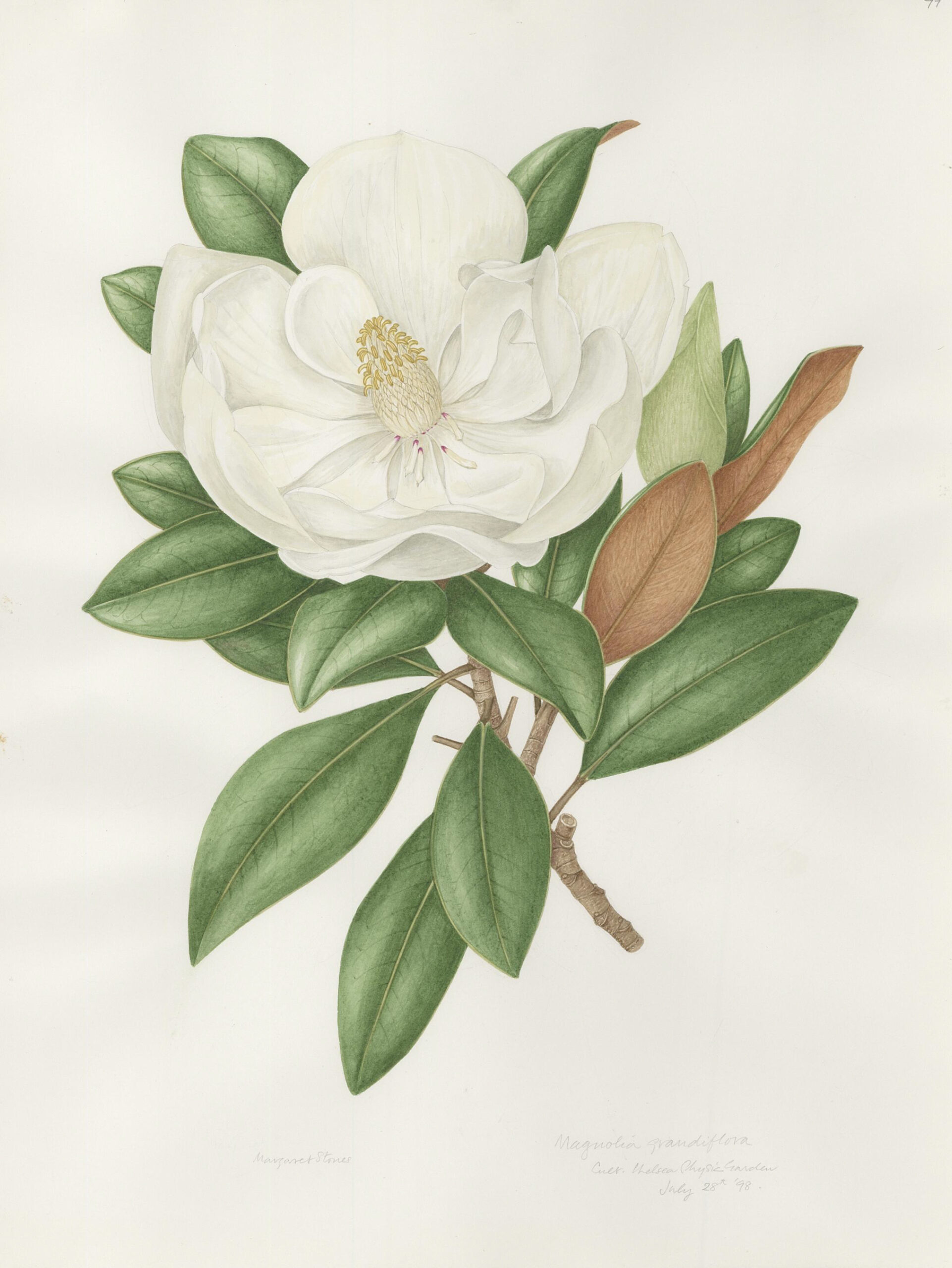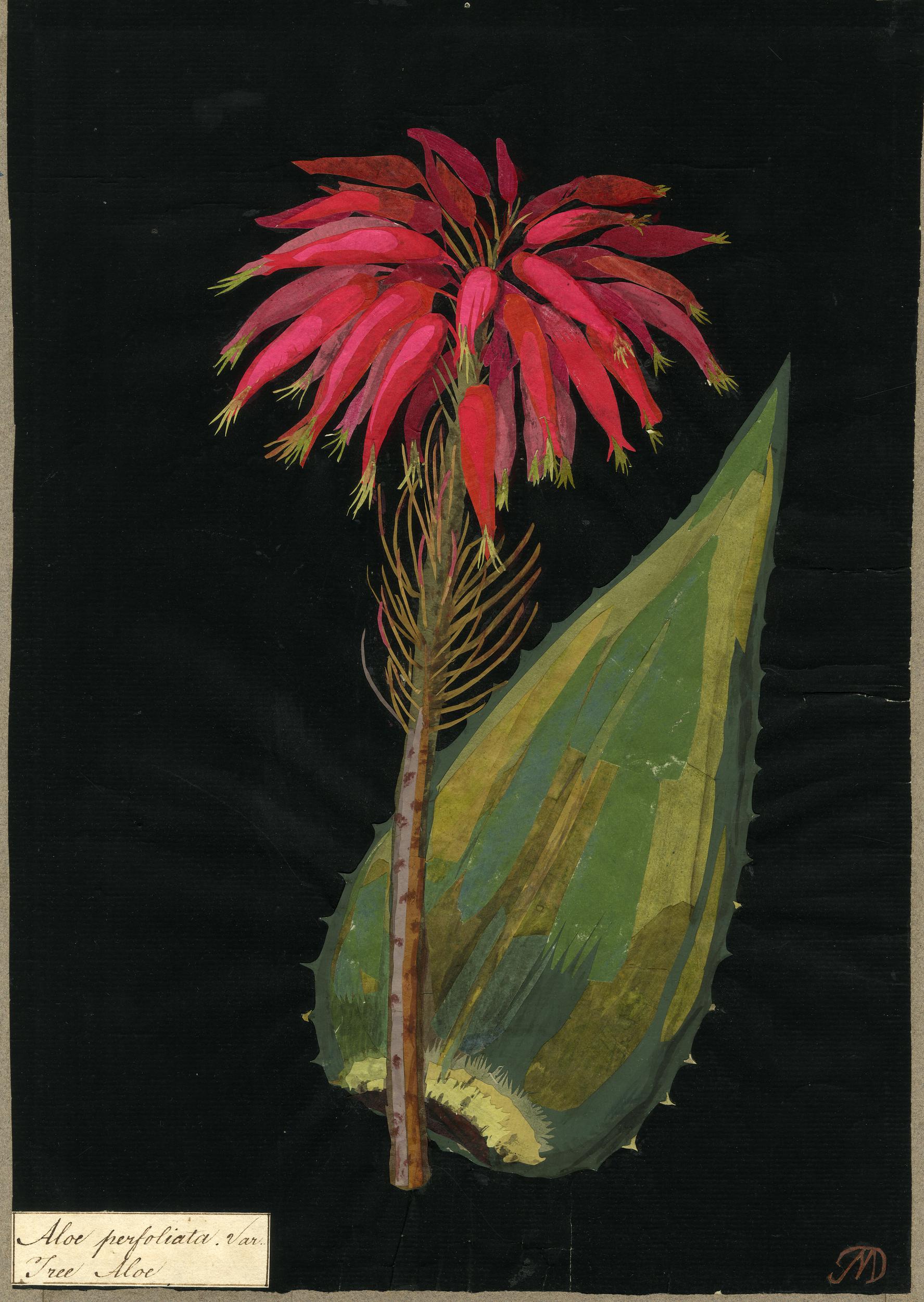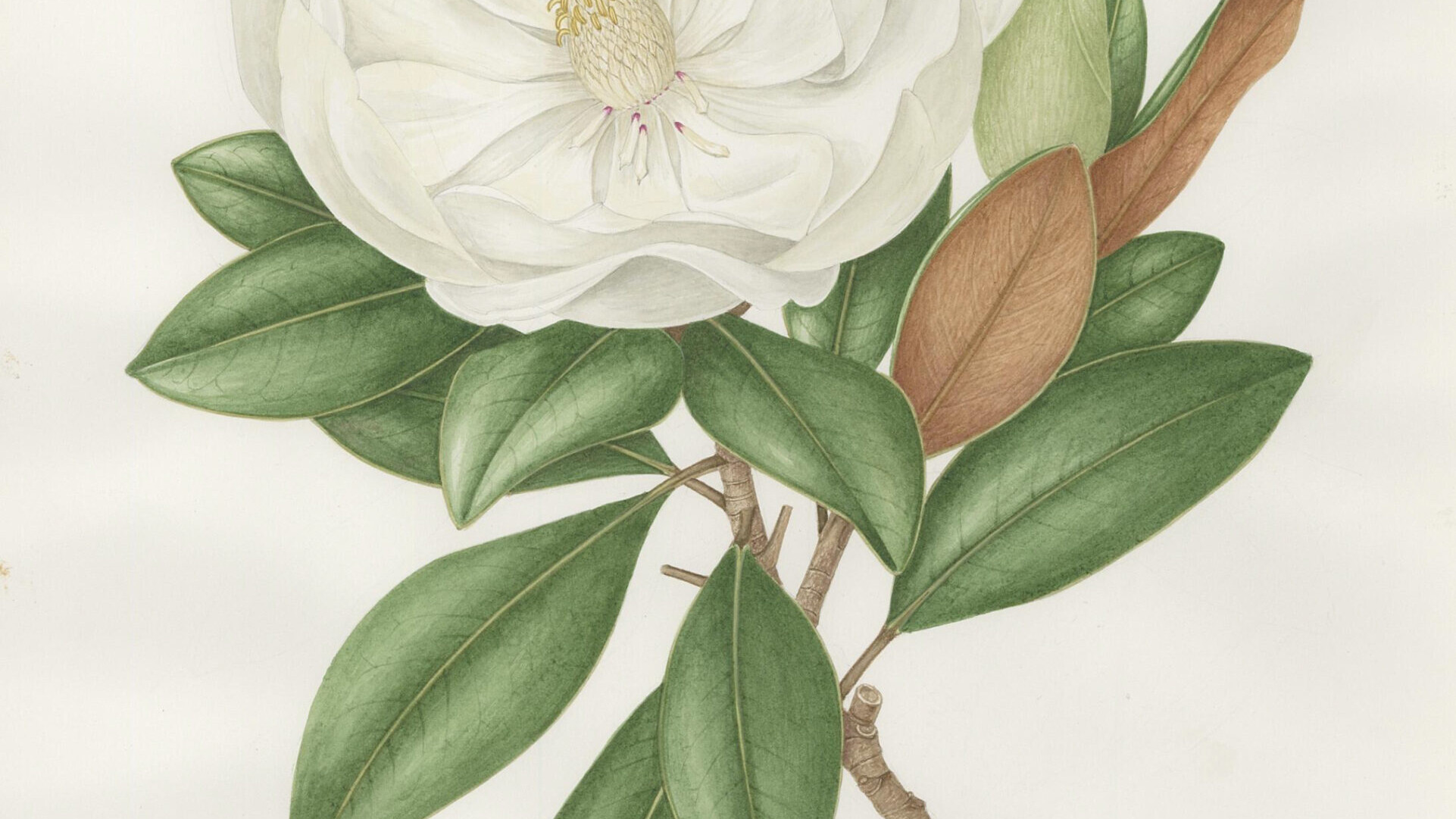Stories of flowers and animals: plants’ most curious pollinators
By Eve Barro, Assistant Project Curator at Chelsea Physic Garden
Every month, we will be labelling the plants mentioned in these blogs to bring our stories to life, so keep an eye out for the circular green labels during your next visit. A full list of these plants can be found at the end of the blog.
Just over 300 hundred years ago, in 1721, Philip Miller (1791-1771) would have become the first person to write about the pollinating activity of bees and to experimentally demonstrate the process. Philip Miller (Chelsea Physic Garden’s Head Gardener between 1722 and 1770) observed how bees pollinated tulips or, as he wrote it, how they entered flowers and “left Dust enough to impregnate the Tulip” (1). It is estimated that 87.5% of flowering plant species are pollinated by animals. While Apis mellifera (western honeybee) is the most frequent floral visitor in natural habitats (2), many other animals visit flowers and facilitate the sexual reproduction of plants. In this month’s blog, let me tell you about five pollinators that you might not have heard of but that are absolutely central to the sexual reproduction of plant species grown at Chelsea Physic Garden.
Vanilla planifolia (vanilla) and Homo sapiens (human)
Humans first pollinated vanilla about 200 years ago. Vanilla planifolia is native to Central and South America. In its native environment it is pollinated by bees of the Eulaema genus. The fruit (seed pod) is obtained as a result of pollination and has become the second most expensive spice in the world due to its labour-intensive production. Vanilla was first cultivated by the Totonacs (indigenous people of Mexico) and then became one of the favourite flavouring agents of the Aztecs (indigenous people of Mexico)(3). After encountering the plant in the 1500’s, Europeans introduced it to the Réunion Island (Indian Ocean). However, the plant was unable to produce fruit, lacking its native pollinator. Edmond Albius, an enslaved man who was then a 12-year-old boy working for plantation owner Ferréol Bellier-Beaumont, developed a technique to hand pollinate the plant (4). His method was then widely adopted and spread. Today 75% of the world’s vanilla comes from Réunion and Madagascar and is hand pollinated.

Ficus carica (fig tree) and Blastophaga psenes (wasp)
Pollinators and the flowers they pollinate often develop a very special interdependent relationship. An example is the interaction between Ficus carica (fig tree) and Blastophaga psenes (wasp). In this case, the plant acts as a nursery bed for the wasp, while the latter act as a pollinator for the fig. Fig trees are dioecious which means that there are separate male and female trees. Figs are technically inverted flowers: both the pollen production and pollination happen inside of it. The trees flower three times per year, coinciding with the different phases of the wasps’ lifecycle. Female wasps first lay eggs inside of male figs. They enter the fig through a narrow tunnel and lose their wings in the process, becoming trapped. They then lay eggs which develop and mature within the fig. The resulting new wasps mate. Male wasps don’t have wings, they chew out a tunnel and die. The fertilised female wasps exit the male fig through the tunnel, their body covered in pollen grains. They then enter a female fig, pollinating the tiny flowers present within them in the process. This allows female figs to develop seeds which are then eaten and spread by birds and mammals (5,6).
Agave americana (century plant) and Leptonycteris nivalis (greater long-nosed bat)
Bats of the Leptonycteris genus are the main pollinators of agaves. These bats are nectar feeding bats. They have an elongated tongue and muzzle which allow them to collect the nectar which accumulates in the interior of agave flowers. They also have short ears which means that, rather than relying on echolocation, they use their sense of smell to find nectar at night (7). The bats rely on the agave nectar particularly during their annual long-distance migration from central Mexico to northern Mexico. Bats transfer pollen from flower to flower as they feed on the nectar allowing the cross fertilisation of agaves. Leptonycteris nivalis (greater long-nosed bat) is classified as being endangered by the International Union for Conservation of Nature (8). It means that both the bats and the plants that rely on their activity to reproduce are in danger. Similarly, the loss and fragmentation of agave habitat is currently leading to a decrease in bat foraging resources, threatening the bat population in return (9). This is mainly due to unsustainable harvest and the conversion of land to agriculture.
Magnolia grandiflora (evergreen magnolia) and Coleoptera spp. (beetle)
When Magnolias evolved on earth about 95 million years ago (cretaceous period), commonly known pollinators such as bees and butterflies had not evolved yet. Beetles are thought to have been one of the first insects to establish pollen-based relationships with plants and, consequentially, to act as pollinators for some flowering plants (10). The pollination of magnolias by beetles thus goes back millions of years. Beetles visit magnolia flowers mainly to feed on their protein rich pollen and are attracted by the aromatic oils emitted by the flowers (a subtle citrus scent). To support their pollinating activity, beetles can display specific features that facilitate pollen collection and transport such as a hairy body and a “brush-like” mandible (11). Magnolia flowers developed a mechanism that favours their cross pollination by beetles: they trap beetles inside the flowers at night, closing the stigma (female reproductive system) and letting the beetles be covered in fresh pollen by the anthers. In the morning, the flowers open so that beetles can fly off to a different flower that has a pollen receptive stigma and pollinate it (12).


Mary Delany (1700-1788)
Garden designer and botanical artist Mary Delany regularly used Chelsea Physic Garden’s specimens to produce botanical illustrations. Mary Delany is renowned for her mastery of paper mosaics, a type of paper cutting and collage that she invented. At least eight out of the 985 collages that she made were of specimens supplied by Chelsea Physic Garden, including Aloe perfoliata. Sir Joseph Banks considered her work to be so detailed and accurate that, from it, he would “venture to describe botanically any plant without the least fear of committing an error” (6). Each plant in the Flora Delanica, her collection of paper “mosaicks”, was represented with scientific accuracy and labelled with the plant’s Linnean and common names, its collection number and date of creation. Her work defied the gendered boundaries of botanical classification which were deemed “unladylike” at the time as it was based on plant sexual reproduction (7).
Theobroma cacao (cocoa) and Forcipomyia spp. (midge)
The primary pollinator of the cocoa tree is a genus of midges called Forcipomyia. Mature cocoa trees produce thousands of flowers per year. However, in cultivation only 10-20% of cocoa flowers get pollinated and successfully produce fruits. The flowers of the cocoa tree grow directly on the trunk or on big branches and are so small than only tiny insects, like midges, are able to access their reproductive parts (13). Most cacao trees are also self-incompatible which means that each tree requires the pollinator to use pollen from a different tree. If flowers don’t receive enough pollen within the first 36 hours after they open, they die (14). It is believed that female midges tend to pollinate cocoa flower more than males as they would be attracted to consume protein rich pollen as a source of food needed for egg maturation (15). However, researchers that compared the pollination pattern of cocoa flowers in the wild versus in cultivation noticed that midges seem to account for only 2% of all insect visitors of wild trees. This suggests that midges might not be the plant’s primary pollinator in the wild (14).
Find the plants mentioned in this post during your next visit of the Garden!
Plant 1: Vanilla planifolia (vanilla)
Plant 2: Ficus carica: Pots in Edible (fig tree)
Plant 3: Agave americana (century plant)
Plant 4: Magnolia grandiflora (evergreen magnolia)
Plant 5: Theobroma cacao (cacao tree)
Want to know more?
Hanson, T. (2018). Buzz: The nature and necessity of bees (First edition). Basic Books, Hachette Book Group.
National Geographic. (2014, October 23). The history of vanilla. Culture. https://www.nationalgeographic.com/culture/article/plain-vanilla
Shoemaker, D. (2021, February 10). Tiny cacao flowers and fickle midges are part of a pollination puzzle that limits chocolate production. The Conversation. http://theconversation.com/tiny-cacao-flowers-and-fickle-midges-are-part-of-a-pollination-puzzle-that-limits-chocolate-production-154334
References
- Lorch, J. (1978). The discovery of nectar and nectaries and its relation to views on flowers and insects. Isis, 69(4), 514–533. https://www.jstor.org/stable/231090
- Hung, K.-L. J., Kingston, J. M., Albrecht, M., Holway, D. A., & Kohn, J. R. (2018). The worldwide importance of honey bees as pollinators in natural habitats. Proceedings of the Royal Society B: Biological Sciences, 285(1870), 20172140. https://doi.org/10.1098/rspb.2017.2140
- National Geographic. (2014, October 23). The history of vanilla. https://www.nationalgeographic.com/culture/article/plain-vanilla
- Edmond Albius: The boy who revolutionised the vanilla industry. (n.d.). The Linnean Society. Retrieved 28 March 2023, from https://www.linnean.org/news/2019/10/16/edmond-albius
- Wheeler, P. (2020). The unique relationship between the fig and the fig wasp. The Open University. https://www.open.edu/openlearn/nature-environment/natural-history/nature-environment/natural-history/the-unique-relationship-between-the-fig-and-the-fig-wasp
- Proffit, M., Lapeyre, B., Buatois, B., Deng, X., Arnal, P., Gouzerh, F., Carrasco, D., & Hossaert-McKey, M. (2020). Chemical signal is in the blend: Bases of plant-pollinator encounter in a highly specialized interaction. Scientific Reports, 10(1), 10071. https://doi.org/10.1038/s41598-020-66655-w
- Wilson, D. E. (1987). Long-nosed bats and agaves: The tequila connection. Bat Conservation International, 5(4). https://www.batcon.org/article/long-nosed-bats-and-agaves-the-tequila-connection/
- Ecology, R. M. (Institute of, Mexico, A. U. of, & City), M. (2015). Iucn red list of threatened species: Leptonycteris nivalis. IUCN Red List of Threatened Species. https://www.iucnredlist.org/en
- Lear, K. (2019). Conserving the endangered Mexican long-nosed bat (Leptonycteris nivalis) through community bat-friendly agave management in northeast Mexico. University of Georgia.
- Pankau, R. (2018). Magnolia pollination . University of Illinois. https://extension.illinois.edu/blogs/garden-scoop/2018-05-05-magnolia-pollination
- Hooks, C. R., & Espíndola, Anahí. (2020). Beetles and pollination – maryland agronomy news. https://blog.umd.edu/agronomynews/2020/06/29/beetles-and-pollination/
- Hevich, P. (2021, March 12). The botany of magnolias. Smithsonian Gardens. https://gardens.si.edu/learn/blog/the-botany-of-magnolias/
- Osterloff, E. (n.d.). Flies are saving your chocolate cravings. Natural History Museum. Retrieved 29 March 2023, from https://www.nhm.ac.uk/discover/flies-are-saving-your-chocolate-cravings.html
- Shoemaker, D. (2021, February 10). Tiny cacao flowers and fickle midges are part of a pollination puzzle that limits chocolate production. The Conversation. http://theconversation.com/tiny-cacao-flowers-and-fickle-midges-are-part-of-a-pollination-puzzle-that-limits-chocolate-production-154334
- Claus, G., Vanhove, W., Damme, P. V., & Smagghe, G. (2018). Challenges in cocoa pollination: The case of côte d’ivoire. In P. W. Mokwala (Ed.), Pollination in Plants. InTech. https://doi.org/10.5772/intechopen.75361
Want to know more?
Anishanslin, Z. (2016). Portrait of a woman in silk: Hidden histories of the British Atlantic world. Yale University Press.
Hessel, K. (2022). The story of art without men. Hutchinson Heinemann.
BOTANICAL ART & ARTISTS. (n.d.). Introducing Georg Dionysius Ehret (1708-1770)—Botanical Artist. BOTANICAL ART & ARTISTS. Retrieved 13 April 2023, from https://www.botanicalartandartists.com/about-georg-ehret.html
References
1- Alexander, D. (2023). John haynes. British Museum.
2- Stungo, R. (1996). Recording the aloes at chelsea. A singular solution to a difficult problem. Notes and Records of the Royal Society of London, 50(1), 47–57.
3- Le Rougetel, H. (1998). Philip Miller: Great gardener of the eighteenth century. Chelsea Physic Garden Company.
4- Stiles Tyson, J. (2021). Sourcing a curious herbal. Herbal History Research Network.
5- Anishanslin, Z. (2016). Portrait of a woman in silk: Hidden histories of the British Atlantic world. Yale University Press.
6- Delany. (2011). Autobiography and correspondence of mary granville, mrs delany: With interesting reminiscences of king george the third and queen charlotte. Vol. 3 (A. H. Llanover, Ed.). Cambridge University Press.
7- Moore, L. L. (2011). Sister arts: The erotics of lesbian landscapes. University of Minnesota Press.
8- Hunting, P. (2002). Isaac rand and the apothecaries’ physic garden at chelsea. Garden History, 30(1), 1. https://doi.org/10.2307/1587324

